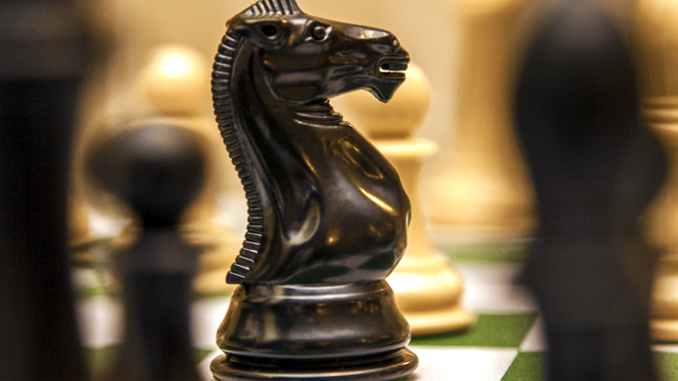
Three-dimensional chess has been around for much longer than most people realize. The earliest popular version is Raumschach (“Space Chess”), created by Herr Doktor Ferdinand Maack in 1907. It had 125 possible squares, based on a set of five 5×5 boards arranged in different levels.
It uses all of the traditional chess pieces, but it also uses a “unicorn”. The whole setup is better when seen rather than explained verbally, so I’ll give you a video. It’s helpful, if a little annoying with the choice of opening music:
“But wait,” many are saying to themselves. “I’ve seen 3-D chess boards. They don’t look anything like that.”
The people saying that are probably picturing this in their heads:
This is the board configuration which is most commonly seen in the United States. This is due entirely to its being featured on the Star Trek television show.
When people refer to others as “playing 3-D chess”, they’re typically referring to this version. It was Spock’s favorite game, and is accepted as unusually difficult and strategic. With that pedigree, it’s understood why it was featured on Star Trek.
That’s a little bit of cart-before-the-horse, though. In reality, this version of 3-D chess is fairly simplistic and clunky in the actual play. After only a few games, most people who own the board decide to use it for display rather than gaming.
There’s a reason for that. The Star Trek version was created on the spot for a scene by the prop people working the Star Trek set. It was slapped together using a 3-D Tic Tac Toe game and some checkers boards. The rules came afterward, as fans attempted to figure out how a game could possibly be played on the visually striking but impractical surfaces.
So, remember: if someone’s playing 3-D chess, they might be a complex thinker… or they might just be buying into ridiculous fakery promoted by the fame associated with a television show.
Question of the night: What’s your favorite traditional board game?
